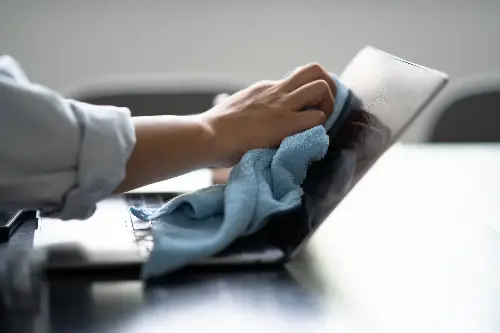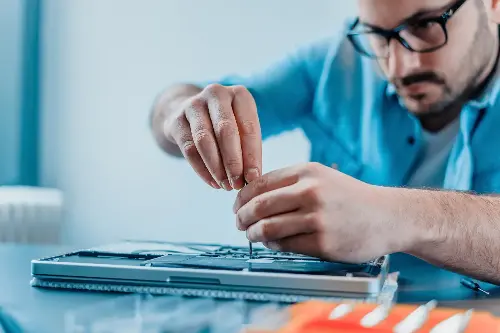Water spills and laptops are a combination that can send chills down the spine of any device owner. Yet, accidents happen, and knowing how to react when they do could be the difference between a minor inconvenience and a major disaster. Whether it's a spilled cup of coffee or a knocked-over water glass, taking the right steps immediately after a spill can save your laptop from certain doom.

Immediate Action Post-Spill
Time is of the essence when your laptop comes into contact with any liquid. The first and most crucial action is to power it off immediately. Don’t waste time shutting down the usual way; press and hold the power button until the machine turns off. Disconnect all peripherals and unplug the power cord. If you can, remove the battery as well. This step halts any electrical currents that might cause shorts and permanent damage.
Next, open the laptop as far as it will go and turn it upside down, forming a tent shape to allow any liquid to drain away from the internal components. Do not shake or move the laptop around excessively, as this can cause the liquid to spread to other areas inside the device.
Drying Out the Device
With your laptop turned off and unplugged, take a dry, absorbent cloth or towel and gently blot any external liquid from the machine. Avoid using heat sources like hairdryers as they can cause further damage. Instead, let the laptop dry naturally in a well-ventilated area. You might want to use a fan to help circulate air around the device, but again, avoid direct heat.
If the spill was significant or sugary, consider taking your laptop to a professional for cleaning. Sugary or sticky substances can cause keys to stick and can be corrosive over time. A professional can safely dismantle your laptop and clean the components before the damage becomes irreversible.

Assessing and Reacting to Damage
After a minimum of 24 hours—or ideally 48 if you can spare the time—check if the laptop is dry on the outside. Then, if you're comfortable and the manufacturer's instructions allow it, you can open up the laptop's case to check for internal moisture. This step should only be undertaken if you're confident in your technical skills, as disassembling your laptop can void the warranty and potentially cause further damage if done incorrectly.
If everything seems dry and there are no signs of damage, re-insert the battery if it was removed. Then, press the power button to see if the laptop turns on. If it does, immediately back up your data if you haven’t done so recently. This step ensures that in the case of delayed reactions from the liquid damage, your data remains safe.
Professional Assessment - When to Get Help
If your laptop doesn’t power on, emits strange noises, or shows any sign of malfunction, refrain from further attempts to power it on. This is the time to get professional assistance. A certified technician will assess the extent of the damage and advise whether the laptop can be saved or if specific components need replacement.
Professional help can be beneficial even if the laptop seems to be working fine, especially if you suspect that some liquid might have seeped deep within the device. Technicians have the tools and expertise to carry out a thorough cleaning and ensure that no corrosive damage will turn up in the future.

Insurance and Warranties
It’s worth checking if your warranty covers accidental spills or if you have insurance that includes accidental damage coverage. These policies can sometimes ease the financial burden of repairs or replacement. However, be mindful that many manufacturers' warranties do not cover accidents like spills, so an insurance check is crucial.
Preventative Measures for the Future
Now that you’ve experienced the horror of a spill incident, taking preventative measures can help avoid future accidents. Consider investing in a waterproof keyboard cover and placing liquids well away from your laptop. Additionally, always have a backup routine for your data, so you're prepared for any mishaps.
Spills don't have to spell the end for your laptop if you act fast and follow these steps. Remember, the sooner you cut power and begin the drying process, the better your chances of salvaging your device. And when in doubt, consult with a professional who can guide you through the rescue operation. Through quick action and a bit of know-how, you can turn a potential device crisis into a mere hicote in your tech life. Keep your laptop dry, your data backed up, and your heartbeat steady—you’ve got this under control.
